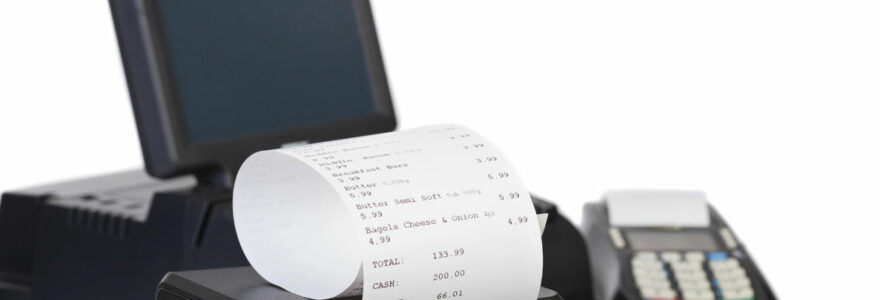Thermal printers are a cornerstone of modern printing technology, offering unmatched speed, efficiency, and reliability. Whether printing receipts, labels, or barcodes, they are a preferred choice across industries for their ease of use and consistent performance.
Discover the advantages of thermal printers and how they are transforming diverse industries.
In this article, we will explore how thermal printers work, their unique features, and the many ways they are utilized in different sectors. By understanding their functionality and applications, businesses can make informed decisions about implementing this versatile technology.
How Thermal Printers Work
Thermal printers use heat to create high-quality text and images on specialized paper or other materials. Their operation is based on one of two primary methods:
1. Direct Thermal Printing
This method involves heat-sensitive paper that darkens when exposed to heat from the printer's thermal head. It is an excellent choice for short-term uses like receipts or shipping labels, though the prints may fade over time when exposed to light or heat.
2. Thermal Transfer Printing
In this approach, the printer uses a heat-sensitive ribbon coated with ink. The heat transfers the ink onto the surface of the print medium, resulting in durable and long-lasting prints. This method is ideal for applications like product labeling or industrial tags.
Both methods eliminate the need for ink cartridges or toners, making thermal printers economical and low-maintenance.
Key Features of Thermal Printers
Thermal printers offer several unique advantages that make them stand out:
1. Speed and Efficiency
Capable of printing at high speeds, thermal printers are particularly suitable for environments with high output requirements, such as retail or logistics.
2. Compact Design
Their small footprint allows easy integration into devices like kiosks, handheld scanners, or medical equipment.
3. Quiet Operation
Unlike impact printers, thermal printers operate silently, enhancing the customer experience in spaces like restaurants or retail stores.
4. Durability and Reliability
Built to withstand demanding environments, thermal printers function effectively in temperature extremes and continuous use scenarios.
5. Environmentally Friendly
With no need for consumables like ink or toner, thermal printers contribute to reduced waste and lower operational costs.
6. Ease of Maintenance
Fewer moving parts mean fewer chances for mechanical failures, translating into minimal downtime and lower repair costs.
Applications of Thermal Printers
Thermal printers are used across a broad range of industries, thanks to their versatility:
1. Retail
In retail environments, thermal printers are widely used for printing receipts and price labels. Their speed and ease of use make them ideal for busy point-of-sale systems.
2. Logistics and Shipping
Thermal printers play a crucial role in printing shipping labels, which often include barcodes or QR codes for tracking purposes. The durability of thermal transfer labels ensures that they remain legible throughout the shipping process.
3. Healthcare
In hospitals and clinics, thermal printers are used for patient identification wristbands, prescription labels, and diagnostic tags. Their precision ensures accuracy in critical operations.
4. Hospitality
Restaurants and hotels rely on thermal printers for tasks such as issuing bills, creating kitchen orders, and managing reservations.
5. Manufacturing
Industrial environments use thermal printers for inventory labeling, compliance tags, and equipment tracking.
6. Gaming and Ticketing
Thermal printers are integral in ticketing systems, such as those used in cinemas, public transport, and entertainment venues, for their fast and reliable output.
7. Emerging Uses in Automation
With the rise of automation, thermal printers are now being used in unmanned kiosks, vending machines, and self-checkout systems. Their ability to integrate seamlessly into automated setups makes them indispensable in modern commerce.
Emerging Trends in Thermal Printing
Thermal printing technology continues to evolve, driven by new demands and innovations:
1. IoT Integration
Internet of Things (IoT) connectivity allows businesses to monitor and control printers remotely, streamlining maintenance and operations.
2. Linerless Printing
Linerless thermal printers eliminate waste from label backings, providing a sustainable solution for businesses focusing on eco-friendly practices.
3. Enhanced Durability
New designs are being developed to handle extreme environments, such as outdoor or high-temperature applications.
4. Compact Customizable Solutions
Advances in compact printer mechanisms enable seamless integration into smaller devices without sacrificing performance.
5. Energy Efficiency
Manufacturers are introducing ultra-low power consumption thermal printers to meet energy-saving goals. This is particularly beneficial for battery-operated or portable applications.
Choosing the Right Thermal Printer for Your Needs
- Printing Speed and Volume: Assess the required output to match printer capabilities.
- Durability Requirements: Consider environmental factors like temperature, humidity, and usage frequency.
- Application-Specific Features: Choose features tailored to specific needs, such as barcode printing or multi-language support.
- Total Cost of Ownership: While thermal printers often have a higher upfront cost, their low maintenance and operating expenses make them a cost-effective choice in the long run.
Thermal Printers: A Key to Efficiency
Thermal printers are a powerful tool for businesses aiming to improve efficiency, reduce costs, and enhance operational reliability. Their high-speed performance, low maintenance needs, and broad range of applications make them indispensable in many industries.
As technology advances, thermal printers are likely to see even greater adoption, with innovations like IoT integration and linerless printing shaping the future of this technology.
For businesses looking to stay ahead, incorporating thermal printing solutions can be a game-changer. Explore the latest advancements in thermal printers to find the right fit for your needs.
